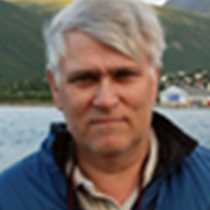In the early morning light, before breakfast, with dark, deep grayish-blue clouds over the heather-covered hillsides, we enter the bay. We are now far out, in the western Hebrides, and the Endeavour casts her anchor. Our Zodiac fleet is soon in the water and we are on our way for the first early outing.
The hotel manager has gone ahead to greet us with hot chocolate and fresh muffins out of the oven. Our aim for the visit is the Broch on top of the hill overlooking the hills nearby, the bay and the ocean.
What can be more appropriate on this mid-summer day's morning? The Broch itself is a huge circular, dry-stone wall building and no one really knows what it was used for. It leaves one's mind free for almost any interpretation and speculation.
As the morning unravels we later arrive at the Stones of Callanish. Another secret and mysterious place! When and why was this monument built? As we walk around these huge standing stones, the calls from different birds like Meadow Pipits and Oystercatchers fill the air. It is also a long Zodiac drive back to the Endeavour through narrow channels and tidal beds which gives us more opportunities to explore the wildlife. The local fisherman has just arrived home from a full day of hard work and the boat is filled with lobster.
The Western Hebrides are the outpost of the British Isles into the notorious windswept North Atlantic. Everything has to face the prevailing wind and any expedition in this part of the world has to play the same game.
Today indeed the weather was in our favor and we entered the ocean to set off for one of the most isolated places in Great Britain, St Kilda, a group of islands about 60 nautical miles further west. As we sailed away from the Hebrides the islands soon came into our view. The ocean was like a mirror and the bird life around the ship was magnificent. Gannets, fulmars and auks in the thousands, sometimes the sea was covered with rafts of puffins.
The late afternoon and early evening were used to explore the island of Hirta. A visit to the museum explained the hardships people had to deal with out here before the evacuation of 1929-30. They lived on an island but the conditions were so rough and hard in the ocean that they could not even fish! The major food supply consisted instead of sea birds, sheep and some very poor agriculture.
Most of us had time also to explore the rich bird life, sea bird colonies with countless number of birds, the village built by the crofters, the small church, endless stone walls…
As the sun slowly vanished behind the high cliffs of St. Kilda, late evening after 10pm, it was about time to round up the last visitors, trapped in the Puffin, the most isolated pub in the world. We set sail and headed east into the dark night. To the west, from the pool deck onboard the Endeavour, we had our eyes on a spectacular sunset. The day was overwhelming and full with rich adventure and experience.




